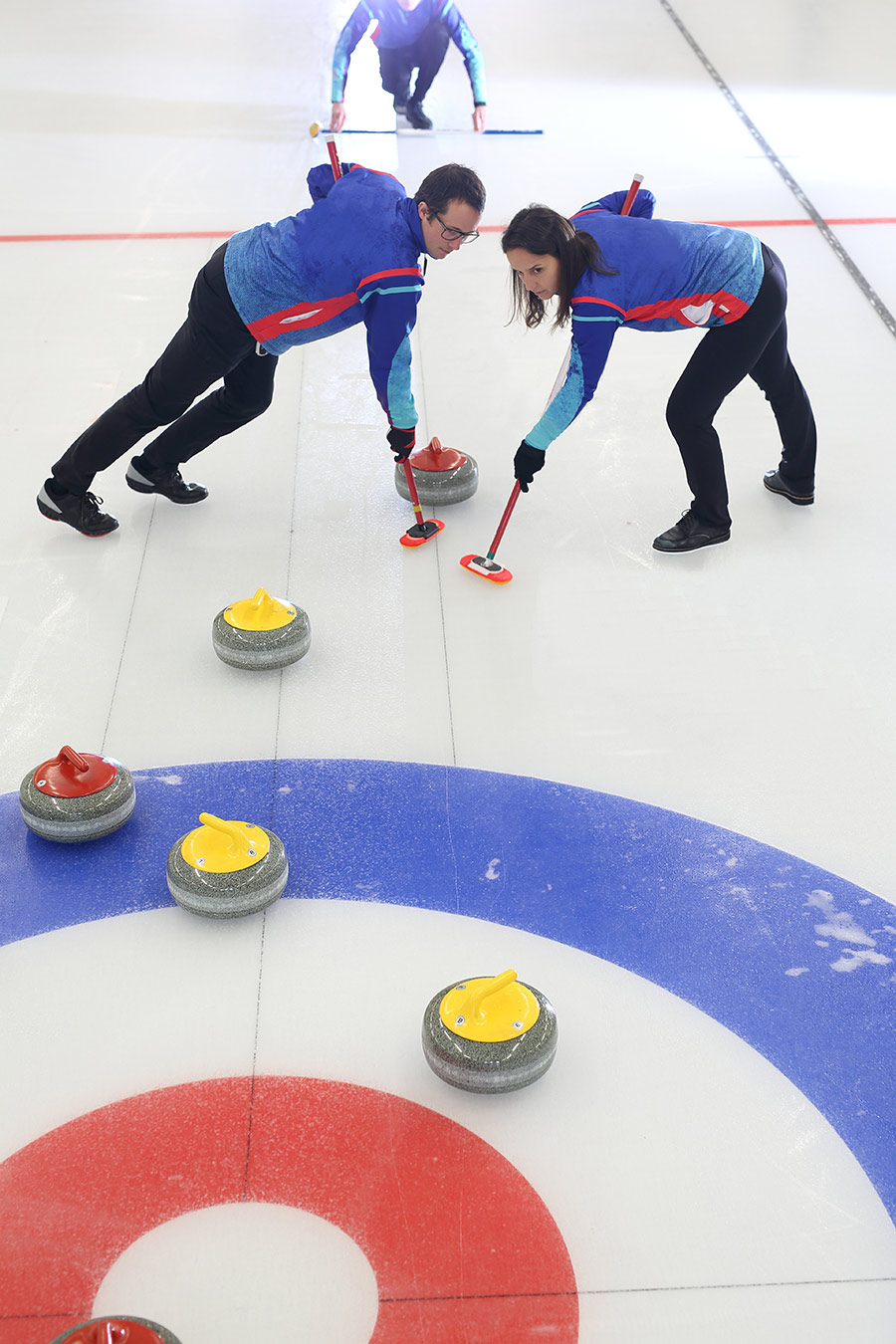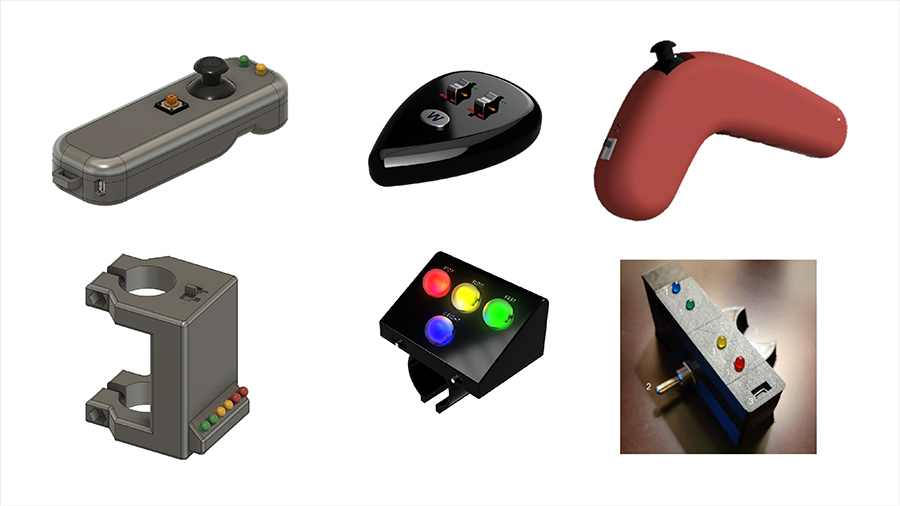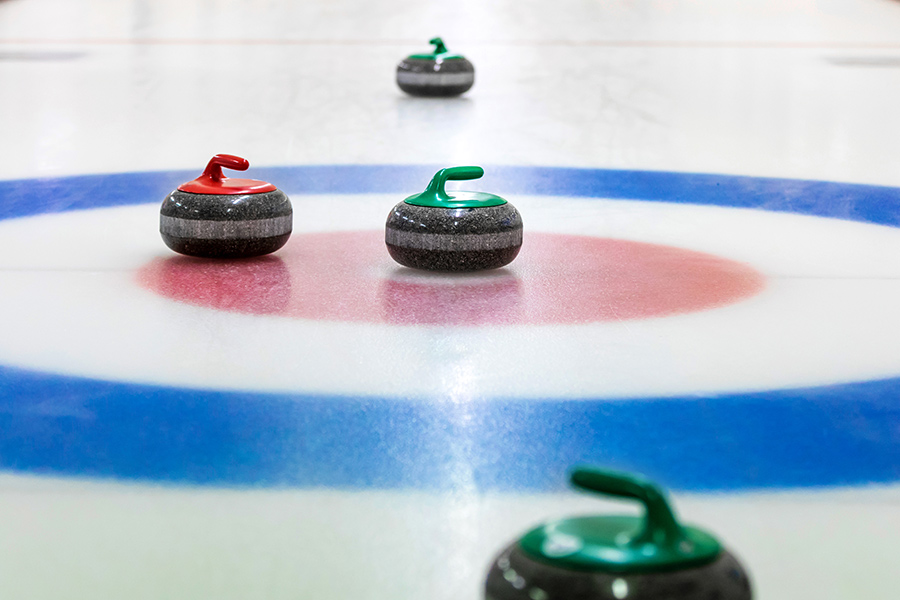Empathic engineering design for accessibility for deaf curling athletes
Deaf curling athletes are particularly disadvantaged as they rely on visual cues for their sweeping commands rather than audible ones. Professor Bob McLeod and Professor Marcia Friesen, from the University of Manitoba in Canada, have developed a team-based engineering design course for computer engineering students, built on the principles of empathic design and design for accessibility. Students form design groups and design a technology solution for deaf curling athletes that enables them to receive sweeping signals from their team captain without having to take their eyes off the stone travelling down the ice sheet.
Curling is a sport likened to lawn bowls, boules, and shuffleboard, but played on ice. Players take turns sliding large, smooth granite stones, or rocks, down a large sheet of ice toward a target area made up of four concentric rings, known as the ‘house’. Two teams, each comprising four players, have eight stones. Each player delivers two stones alternately with an opponent. The players throw their stones from one end of the 156ft-long curling ‘sheet’ to the other. The aim is to get more stones closer to the centre of the target, or ‘button’, than your opponent. When a player throws a stone, two of their teammates use brooms to sweep the ice in front of the sliding stone. Sweeping decreases the friction and changes both the stone’s trajectory and the distance it travels. The team captain, or ‘skip’, yells sweeping instructions to guide the sweepers, telling which sweeper, or both, is to sweep hard, lightly, or not at all.
Deaf curling athletes are particularly disadvantaged as they rely on visual cues for their sweeping commands, rather than audible ones. Having to look at the skip for visual cues distracts the sweeper’s attention and their posture away from the critical task at hand. When compared with hearing players, they are receiving their instructions on a delay. Moreover, they lose sweeping power as they repeatedly rotate their torsos and heads from the ice to the skip, and they risk ‘burning a rock’, that is, touching it with their broom, which takes it out of play.

Dr Bob McLeod, Professor of Computer Engineering, and Professor Marcia Friesen, Dean of the Price Faculty of Engineering, from the University of Manitoba in Canada, have developed a team-based design course for computer engineering students, built on the principles of empathic design and design for accessibility. Rather than focusing on designing for equality, which only produces fairness when everyone starts from the same place and requires the same help, the design centres on equity, providing everyone with what they need to be successful, so everyone has access to the same opportunity.
Empathic design task
Students taking this third-year computer engineering team-based design course are presented with the challenge to design a technology solution for deaf curling athletes that enables them to receive sweeping signals from the skip without having to take their eyes off the stone travelling down the ice sheet.
The course follows a design paradigm placing special emphasis on empathic design, modelling, iterative refinement, focusing on the user, functional and physical prototyping.
The course is underpinned by Stanford’s model of design thinking and social engagement, a creative problem-solving methodology that is particularly suited to real-world projects. The model is made up of five steps. The first is empathise, that is learn about the people that you are designing for and their needs. Second is define, to decide what needs solving. Then ideate, generating ideas and building on them. Prototype involves building quick, functional versions of the ideas to find out what works. The last stage is testing to find out what the users think. McLeod describes how ‘the course follows a design paradigm placing special emphasis on empathic design, modelling, iterative refinement, focus on the user, and functional and physical prototyping’.

Course structure
Tasked with the empathic design of assistive technology for curling, design groups are formed with three or four members. Over the course of a 13-week term, the students progress through a modified design cycle, moving from conceptual design to the creation of a functional prototype, including the ergonomic considerations required for a physical prototype. The course flows through topics where students explore conceptual stances, the technical considerations of their projects, and modelling prototypes, together with business developing, marketing, and commercial topics for knowledge transfer. The first and last themes are a departure from the traditional delivery of the course. The first allows students to explore engineering design processes, the ethics and equity involved in design, and the design of assistive technology. The allied topics for knowledge transfer enable students to examine intellectual property protection and provide an awareness of other professionals working with engineers in areas they will encounter as their careers progress. This includes guest lectures from experts in EDI (equity, diversity, and inclusion), engineering entrepreneurship, IP (intellectual property) protection, physical prototyping, IoT (Internet of Things) security, and product development.
Know your user
The course is axiom based so the tutors can reference the rules during the design process. The researchers reflect on the Golden Rule of Design: ‘Know Your User’, which is probably the most important as well as the hardest to follow. Moreover, knowing your user encompasses entering the user’s experience. This was exemplified when some students brought earplugs to wear during their visit to the curling rink to better understand the challenges a deaf curler faces.

Project challenges
The curling project poses two main challenges: students who are unfamiliar with curling and designers who can hear, designing a communication system for curling athletes who are deaf. COVID-19 imposed additional challenges, including delivering the course in a completely virtual format in 2021 and for a month during 2022. Although none of the students were curlers pre-COVID, the class was able to visit a local curling club to explore the physical environment and learn how to play the game. During COVID, the less effective virtual version allowed students to use YouTube to research and watch numerous curling videos.
Both professors are fans of curling, and during the course their students developed an appreciation of the sport. In particular, they gained an understanding of the challenges faced by those curling athletes who are hard of hearing. The term also coincided with major national and international curling competitions, demonstrating how the design was not ‘a “toy problem” but rather, like many, a niche awaiting entrepreneurial ideas’.
Students’ design solutions
At the end of the course, each team made a formal presentation of their design and produced a conference or media poster. The tutors were impressed with their novel, imaginative, and creative output. Each design group also produced a minimal virtuous prototype that demonstrated the functionality of the product.

Students’ solutions frequently involved one of the following combinations: a) the skip conveys sweeping instructions via a hand-held remote using buttons, joysticks, or a mobile phone app, to an LED bank fixed to the sweeper’s brooms; b) the skip communicates sweeping instructions through gesture inference of a hand-held or glove-like controller equipped with an accelerometer (a device that measures vibration or acceleration of motion), emulating a deaf skip’s hand signals which is then conveyed to the sweepers’ devices; c) the skip uses a button-based skip controller that communicates with a haptic device (vibrating motor(s)) embedded in the sweeper’s armband or undershirt.
The design was not a ‘toy problem’ but rather, like many, a niche awaiting entrepreneurial ideas.
Reflections
The students’ self-reflections of their experiences of the first three runs of the course in 2020 through 2022 were largely positive. Many disclosed that none of their other courses took them through a complete design cycle, nor did any other course incorporate the business development content.
McLeod and Friesen plan to continue with the same design challenge for a few more years, but they will switch to new accessibility challenges to avoid designs from previous students being reused or ‘borrowed’. The course will still centre on accessibility-oriented design solutions to maintain the importance of being empathic designers. The team intend to place greater emphasis on the use of IoT frameworks and security in future designs. They also want to explore ways for the students to engage directly with the clients and still respect the clients’ desires and abilities. To date, the deaf curlers were somewhat reticent to engage directly with students, although they were happy to receive email information from the tutors.

Unteaching: the pedagogical epiphany
McLeod shares that ‘the pedagogical epiphany that was to “unteach’’. Often, tutors teach to ‘show what they know’ and present too much information, including recommendations of what the student should design and how they should go about designing it. ‘It takes considerably more restraint to reserve our design ideas, biases and opinions in favour of feedback and Socratic dialogue on which each team can reflect on preconceptions and misconceptions.’
Personal Response
What inspired you to create this course?
This course and its ongoing evolution arose somewhat organically. An opportunity presented itself to revamp the content, and it seemed a perfect time to introduce a design-oriented course grounded in empathic design principles. As instructors, we have learned to let the teams innovate, design and prototype their own ideas.
How do you encourage students to step outside their comfort zone so that they can benefit fully from the experiences this course offers?
It turns out that for many engineering students, this is their comfort zone. They have ideas, they like to design, they like to prototype, they are comfortable with open-ended problems, they embrace unfamiliar domains, they are comfortable in groups, and they like to present their ideas to the class. Some students do find the time management of this course a challenge, but a team-based approach helps both in this area and with the general comfort level as opposed to being on one’s own. I also bring our chihuahua Jolene to the class for presentations which contributes to an overall ease within the course.